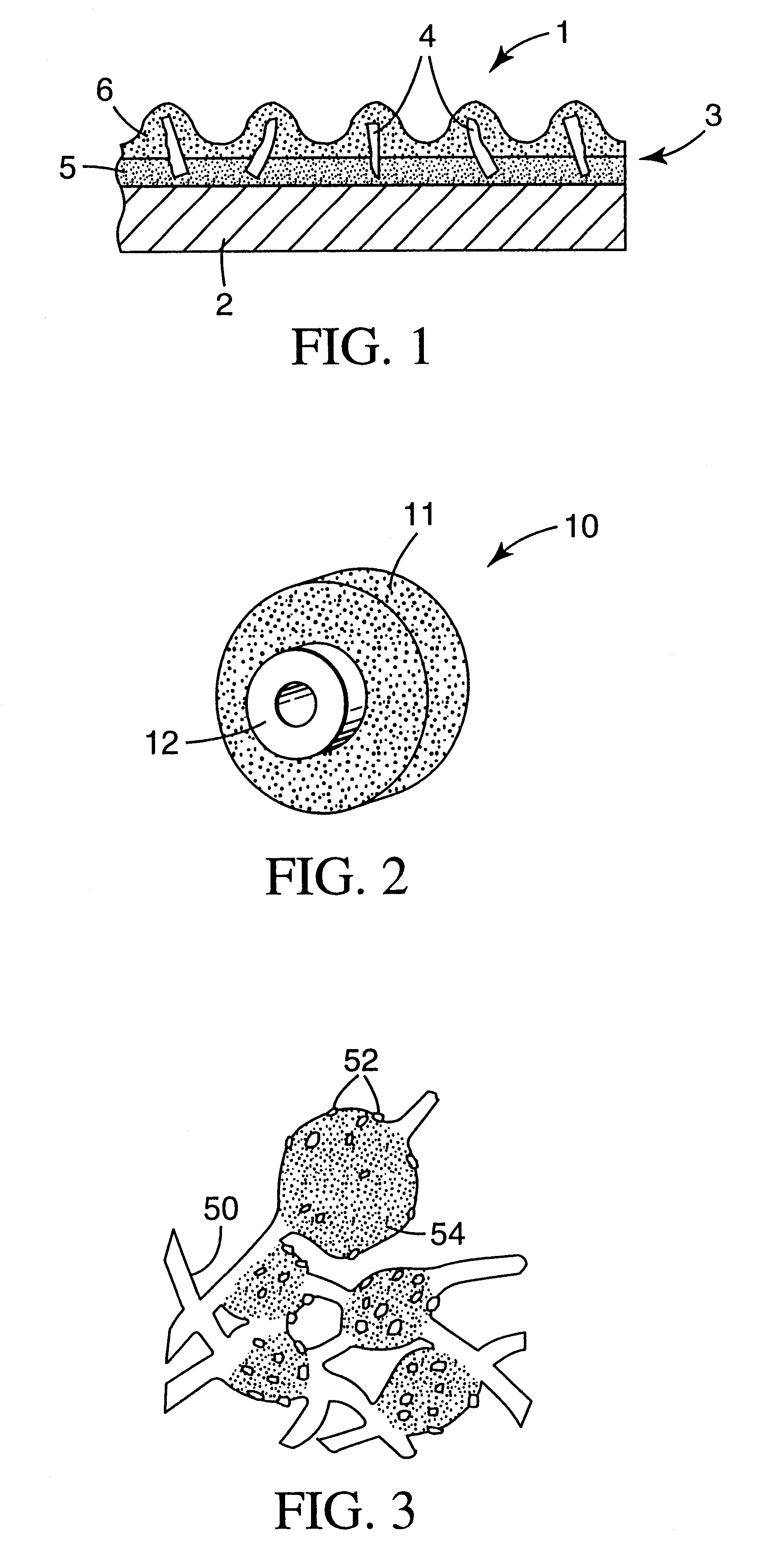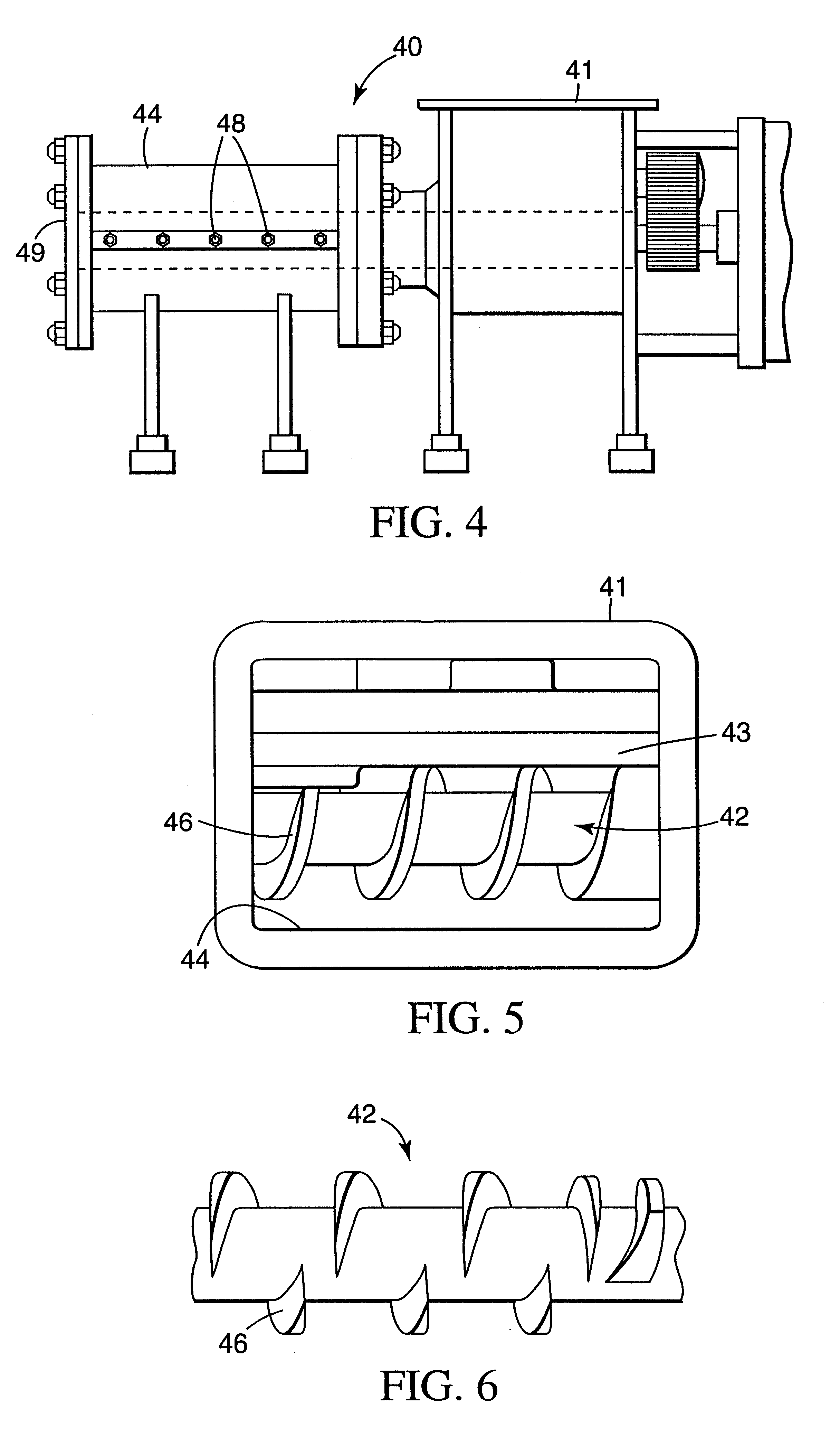Abrasive grain, abrasive articles, and methods of making and using the same
a technology of abrasive grains and abrasives, which is applied in the field of abrasive grains and abrasive articles, and the field of making and using the same, can solve the problems of unsatisfactory increase in grain growth and toughening of abrasive grains
- Summary
- Abstract
- Description
- Claims
- Application Information
AI Technical Summary
Benefits of technology
Problems solved by technology
Method used
Image
Examples
example 1
A dispersion was made by mixing together 600 grams of AAMH, 20.5 grams of ZRN, 15 grams of CS, 36 grams of HNO.sub.3, 100 grams of 10 having 6.5% iron oxide (calculated on a theoretical metal oxide basis as Fe.sub.2 O.sub.3), and 1,650 grams of DWT in a conventional 4 liter, food grade blender (Waring blender available from Waring Products Division, Dynamics Corp. of America, New Hartford, Conn.; Model 34BL22(CB6)). The DWT, HNO.sub.3, ZrO.sub.2, CS, and IO were placed in the blender and mixed. The AAMH was then added, and the contents mixed at low speed setting for 60 seconds.
The resulting dispersion was transferred into glass trays (obtained under the trade designation "PYREX") and allowed to gel at room temperature. The gelled dispersion was then dried overnight at approximately 93.degree. C. (200.degree. F.) to provide dried, friable solid, material. The dried material was crushed using pulverizer (having a 1.1 mm gap between the steel plates; obtained under the trade designatio...
example 2
Example 2 coated abrasive discs were prepared as described for Example 1 except (a) the amount of ZRN was increased by 600%, and (b) the amount of AAMH was decreased by 6.4%. The composition of the sintered abrasive grain, based on the formulation used to make the grain, was, on a theoretical metal oxide basis, 87.5% by weight Al.sub.2 O.sub.3, by weight 7% by weight ZrO.sub.2, 3% by weight MgO, 1% by weight SiO.sub.2, and 1.5% by weight Fe.sub.2 O.sub.3, based on the total metal oxide content of the sintered abrasive grain.
example 3
Example 3 coated abrasive discs were prepared as described for Example 1 except (a) the amount of MGN was increased by 133%, and (b) the amount of AAMH was decreased by 5.3%. The composition of the sintered abrasive grain, based on the formulation used to make the grain, was, on a theoretical metal oxide basis, 88.5% by weight Al.sub.2 O.sub.3, 1% by weight ZrO.sub.2, 7% by weight MgO, 1% by weight SiO.sub.2, and 1.5% by weight Fe.sub.2 O.sub.3, based on the total metal oxide content of the sintered abrasive grain.
PUM
| Property | Measurement | Unit |
|---|---|---|
| Length | aaaaa | aaaaa |
| Length | aaaaa | aaaaa |
| Fraction | aaaaa | aaaaa |
Abstract
Description
Claims
Application Information
 Login to View More
Login to View More - R&D
- Intellectual Property
- Life Sciences
- Materials
- Tech Scout
- Unparalleled Data Quality
- Higher Quality Content
- 60% Fewer Hallucinations
Browse by: Latest US Patents, China's latest patents, Technical Efficacy Thesaurus, Application Domain, Technology Topic, Popular Technical Reports.
© 2025 PatSnap. All rights reserved.Legal|Privacy policy|Modern Slavery Act Transparency Statement|Sitemap|About US| Contact US: help@patsnap.com


